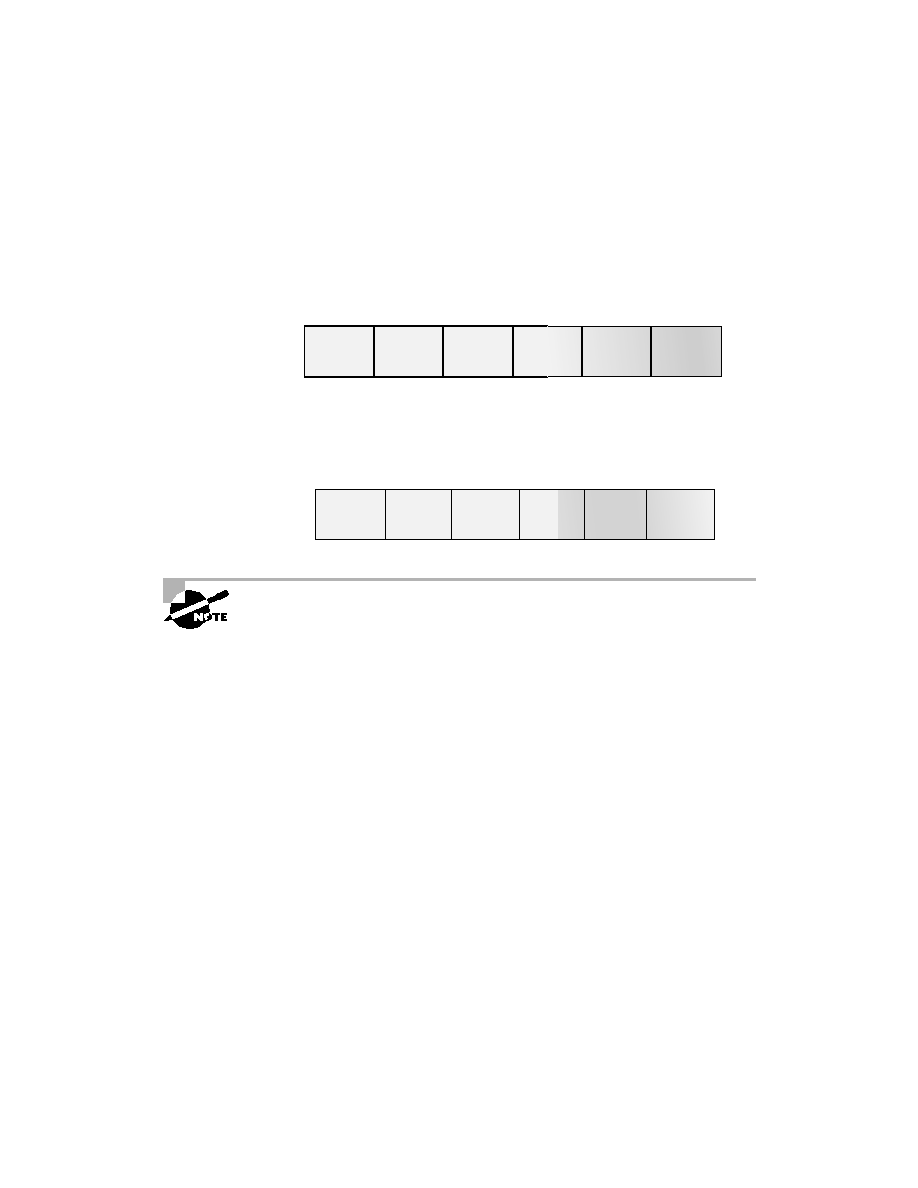
32
Chapter 1
Internetworking
is error detection, not error correction. The 802.3 frames and Ethernet frame
are shown in Figure 1.12.
F I G U R E 1 . 1 2
802.3 and Ethernet frame formats
Encapsulating a frame within a different type of frame is called tunneling.
The following points detail the different fields in the 802.3 and Ethernet
frame types.
Preamble An alternating 1,0 pattern provides a 5MHz clock at the start
of each packet, which allows the receiving devices to lock the incoming bit
stream. The preamble uses either an SFD or synch field to indicate to the
receiving station that the data portion of the message will follow.
Start Frame Delimiter (SFD)/Synch SFD is 1,0,1,0,1,0, etc., and the
synch field is all 1s. The preamble and SFD/synch field are 64 bits long.
Destination Address (DA) This transmits a 48-bit value using the least
significant bit (LSB) first. The DA is used by receiving stations to deter-
mine if an incoming packet is addressed to a particular node. The desti-
nation address can be an individual address, or a broadcast or multicast
MAC address. Remember that a broadcast is all 1s (or Fs in hex) and is
sent to all devices, but a multicast is only sent to a similar subset of nodes
on a network.
Preamble
8 bytes
Preamble
8 bytes
DA
6 bytes
SA
6 bytes
Length
2 bytes
Data
FCS
DA
6 bytes
SA
6 bytes
Type
2 bytes
Data
FCS
4 bytes
Ethernet_II
802.3_Ethernet
Copyright ©2002 SYBEX, Inc., Alameda, CA
www.sybex.com
